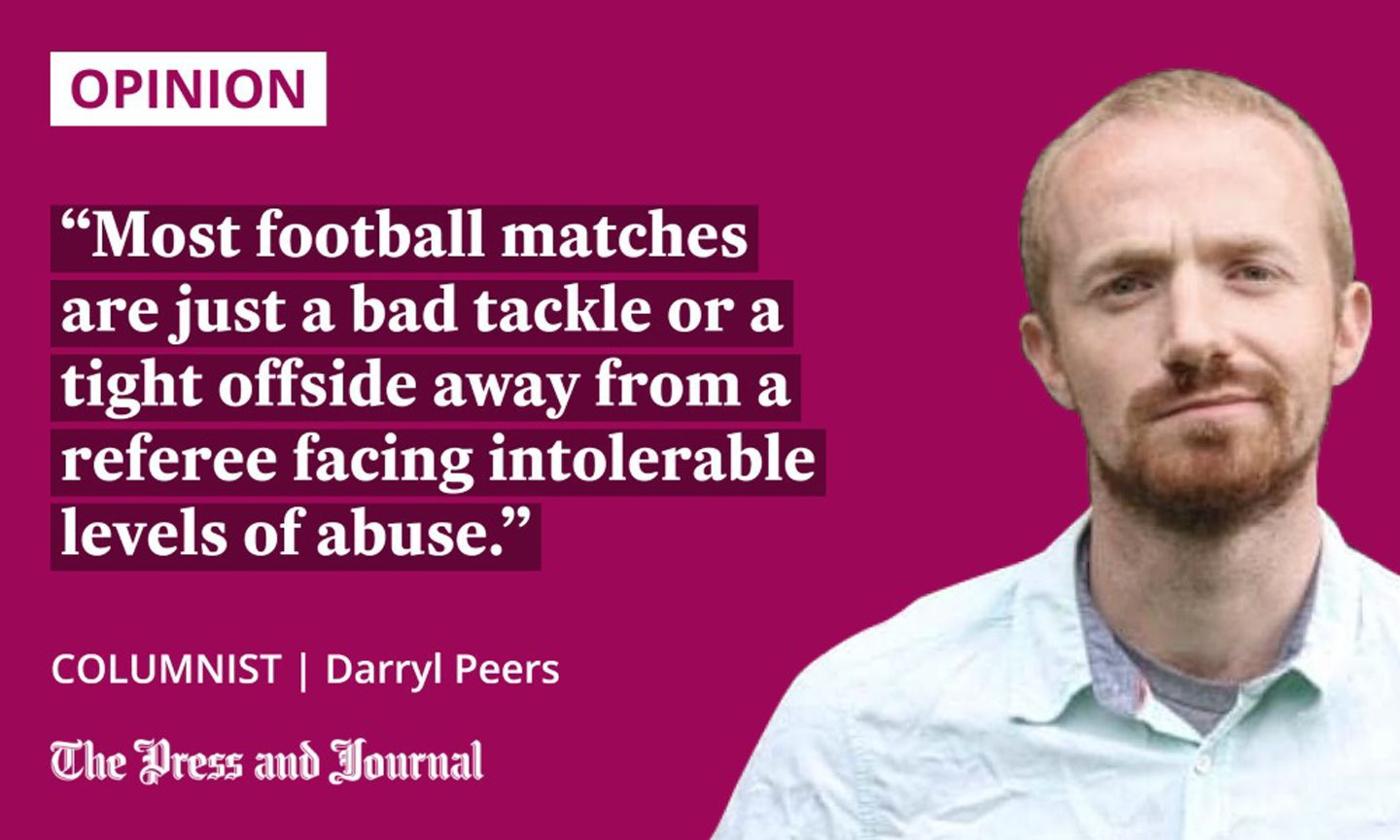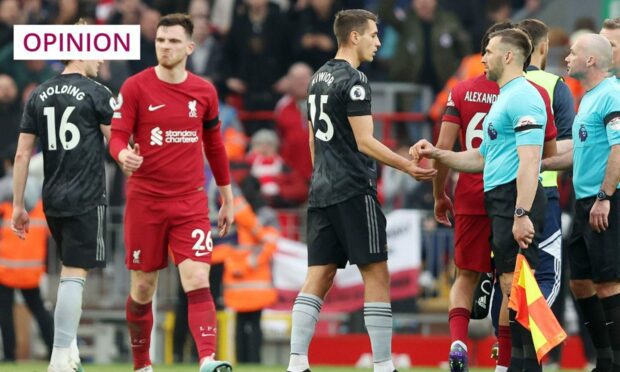At half-time during last weekend’s Liverpool v Arsenal football game, Liverpool left-back Andy Robertson approached the assistant referee.
Video footage appears to show Robertson grabbing the arm of the official, who raises his elbow to shrug the player off, perhaps catching Robertson on the chin.
The Sky Sports talking heads commenting on the scene said how remarkable it was. Since then, several pundits have remarked that they’ve never seen something like this before.
I watched the incident impassively. The top tiers of professional football in the UK have long been crucibles for intense confrontations between players and officials. We regularly watch players lose their tempers with each other. Of course, we expect match officials to hold themselves to a more professional standard, but they are human, too.
To say that a match official is human is to say that they have emotions which can get the better of them. It takes years for referees and assistants to acquire the necessary experience and qualification to officiate at the professional level. We are used to seeing them exert mind-bending levels of composure in the most challenging, emotionally-charged, and violent circumstances. This is a skill that takes time to develop, and it is harder to practise at some times than others.

Composure is something that many players do not even try to keep. We call defenders who stay calm as the opposition’s attackers bear down on their penalty area “composed” if they intercept the final pass. We do not reassess that description when, seconds later, we watch them berate an official for something they perceive should have been given as offside. In this way, anger toward officials is legitimised.
In the incident with Constantine Hatzidakis, Andy Robertson’s perception that an assistant referee can be spoken to in an aggressive and disrespectful manner is what sets the context for the altercation. Robertson seeks out and initiates physical contact with the assistant referee.
Hatzidakis should, of course, not react in a physical manner, but Robertson’s behaviour was based on a commonplace assumption that an official is a mute, inanimate object toward whom aggression can be directed without consequences.
Much of what is still deemed ‘OK’ is part of the problem
In the last week, we have seen Scottish referee Kevin Clancy and his family receive death threats following the publication of his contact details online. English Premier League referee Chris Kavanagh was pushed by Fulham striker Aleksandar Mitrović, for which the player has received an eight-match ban.
While that ban might make it seem like action is being taken, I suggest that pressure on top-level match officials is so high because it is permitted to be so. There is some degree of pressure that is unavoidable when you are refereeing a game of football. However, officials need to be empowered to take robust and routine disciplinary action against players until the culture in football evolves to widely acknowledge the personhood of match officials.
This means understanding that referees feel emotions, that – even as they are expected to model composure and integrity – the situations which they have to manage are exacerbated by players who do not take accountability for their aggression or, in certain cases, dishonesty. It has become so normalised for referees to receive abuse from players, that I would argue much of what is still deemed “OK” is part of the problem.
When I was 16 years old, I became a qualified referee for the Scottish Football Association. I would often hear referees operating at a variety of levels discussing “banter” that players would have with them. When I would witness this “banter” for myself, I saw situations which I felt should result in players being yellow or red carded.
Perhaps as a means of surviving in stressful environments, I felt that these referees were imagining that players respected them more than they did. They believed that they had control over games that they were officiating, when what I saw was the fortuitous avoidance of incidents which might have led entitled players to do something that could not be ignored.
It’s no way to speak to another person
In the present climate, at the professional and grassroots levels, most football matches are just a bad tackle or a tight offside away from a referee facing intolerable levels of abuse. When referees act on this, they are perceived as officious, causing a fuss, or ruining the game.
We hear about the worst incidents, the ones that are easy to denounce. But I am also thinking of the simple throw-ins that go against players, coaches and fans, who will react by shouting something like: “F*** off, ref, you couldn’t see that!” This is no way to speak to another person.
It’s the moments we think nothing of, the ones we might want to call “normal”, which do the work of dehumanising referees. They are the moments which make the extreme incidents possible.
Darryl Peers is a writer from the north-east of Scotland

Conversation